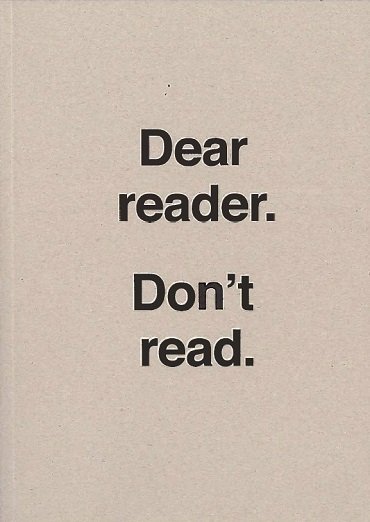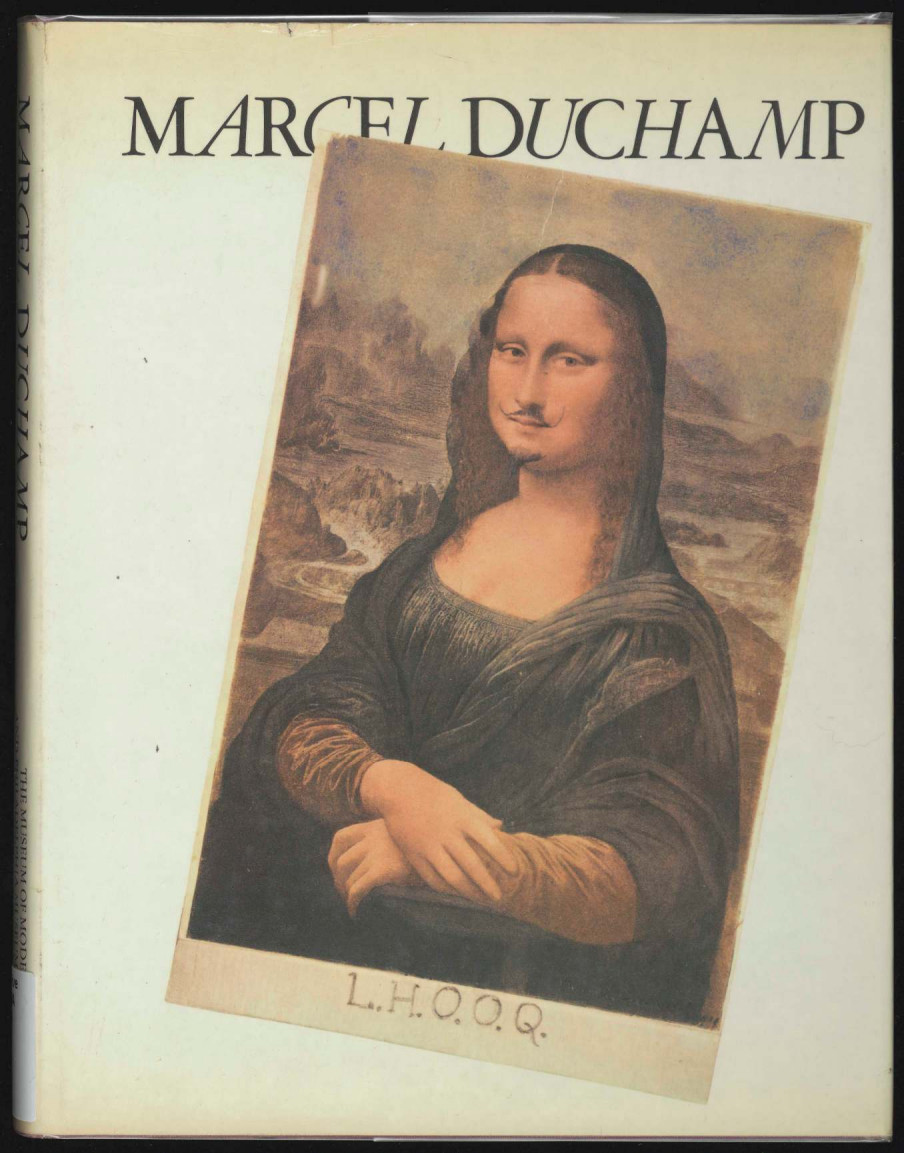Ulises Carrión: Dear Reader. Don’t Read (2016) [EN, ES]
Filed under catalogue | Tags: · art, art history, artists book, conceptual art, language, mail art, video art

“A key figure in Mexican conceptual art, Ulises Carrión (1941–1989) was an artist, editor, curator, and theorist of the post-1960s international artistic avant-garde.
Texts by Guy Schraenen, Felipe Ehrenberg and João Fernandes, among others, illustrate aspects of his artistic and intellectual work. From his early career as a young, successful writer in Mexico to his numerous activities in Amsterdam where he cofounded the independent artists’ run space In-Out Center and founded the legendary bookshop-gallery Other Books and So (1975–79), the first of its kind dedicated to artists’ publications.”
Catalogue published on the occasion of the exhibition at Reina Sofia, Madrid, March-October 2016.
Edited by Guy Schraenen
Publisher Museo Nacional Centro de Arte Reina Sofía, Madrid, 2016
Creative Commons BY-NC-ND 4.0 International License
ISBN 9788480265393, 8480265396
267 pages
English: PDF, PDF (19 MB), Issuu
Spanish: PDF, PDF (23 MB), Issuu
De Ridder Retrospective (1983) [NL/EN]
Filed under artist publishing, catalogue | Tags: · art, fluxus, performance, radio art, theatre

Book with comic strips, conversations and a chronology of Dutch radio art maker, magazine editor and Fluxus member Willem de Ridder, issued to accompany his retrospective at the Groningen Museum in the Summer of 1983. The part in English starts on page 34.
“In 1961, Willem de Ridder set up Mood Engineering Society together with Peter Schat, Wim T. Schippers, Misha Mengelberg, Jaap Spek, Louis Andriessen and Govert Jurriaanse, most of them avant-garde musicians. Among their first activities was De Ridder’s Papieren konstellaties [Paper Constellations], which could be ‘constructed’ anywhere as long as an audience was present to participate in this so-called PK theatre and help determine its appearance. Traditional theatre, it was felt, had to be given the boot. It had remained stuck too long in the renaissance model of the proscenium stage and should be replaced by dynamic, mobile installations, variable acoustics and–following John Cage–the theatricality of silence, which, it was anticipated, would make the audience restless. The group performed three concerts in February 1962. Fully in the spirit of Fluxus, the hierarchy between artist/composer and performer as well as between performer and audience was abolished. Objects fulfilling a clearly visual function, such as a tape recorder, were featured in the concerts. The introduction of a visual element suited the ambition to destroy the traditional boundaries between the disciplines of art, following Cage’s example. After the concerts, MES was dissolved, despite the fact that various museums in the country were offering them the opportunity to put on new performances. De Ridder became a representative of Fluxus for the Netherlands in 1963.” (Marga van Mechelen, 2006)
Written and compiled by William Levy and Willem de Ridder
Publisher Groninger Museum, Groningen, 1983
ISBN 906477062X, 9789064770623
80 pages
via thepiratebay.worm.org
PDF (33 MB)
Comment (0)Marcel Duchamp (1973)
Filed under book, catalogue | Tags: · art, art criticism, art history

Catalogue for a retrospective exhibition co-curated by Anne d’Harnoncourt of the Philadelphia Museum of Art and Kynaston McShine of The Museum of Modern Art. In addition to these venues, the show traveled to The Art Institute of Chicago. This exhibition, the third retrospective dedicated to Marcel Duchamp and the first organized following the artist’s death, was also an inaugural exhibition of the Philadelphia Museum of Art’s newly formed 20th Century Art Department. The museum has a substantial collection of Duchamp works, the majority of which came to it through the 1950 gift of the Louise and Walter Arensberg Collection.
The book contains a documented photographic survey of Duchamp’s works (over 90 pp), passages from Duchamp’s lectures, comments and tributes from 50 contemporaries, documentary illustrations, a chronology (over 20 pp), a bibliography (10 pp), and ten original essays by scholars and critics: Michel Sanouillet, Richard Hamilton, Lawrence D. Steefel, Jr., Arturo Schwarz, David Antin, Lucy R. Lippard, Kynaston McShine, Robert Lebel, Octavio Paz, and John Tancock. The essays cover Duchamp’s explorations in the areas of language, poetry, the machine, alchemy, and the epistemology of art; on a more personal level, they treat the milieux and the friend ships that shaped his character, the life style to which he adhered, the influence his example has exerted.
Edited by Anne d’Harnoncourt and Kynaston McShine
Publisher Museum of Modern Art, New York, and Philadelphia Museum of Art, Philadelphia, 1973
ISBN 0870702963, 9780870702969
345 pages
via MoMA

